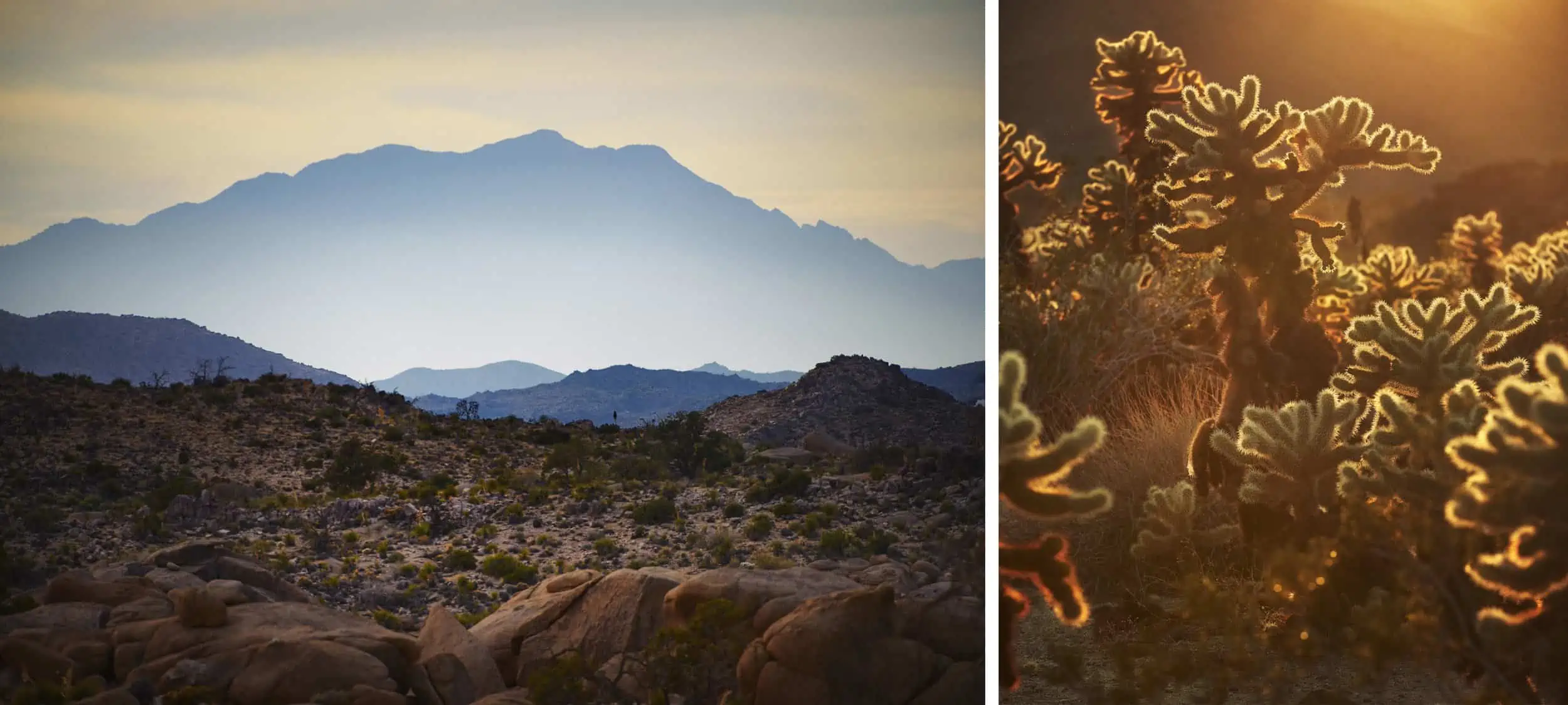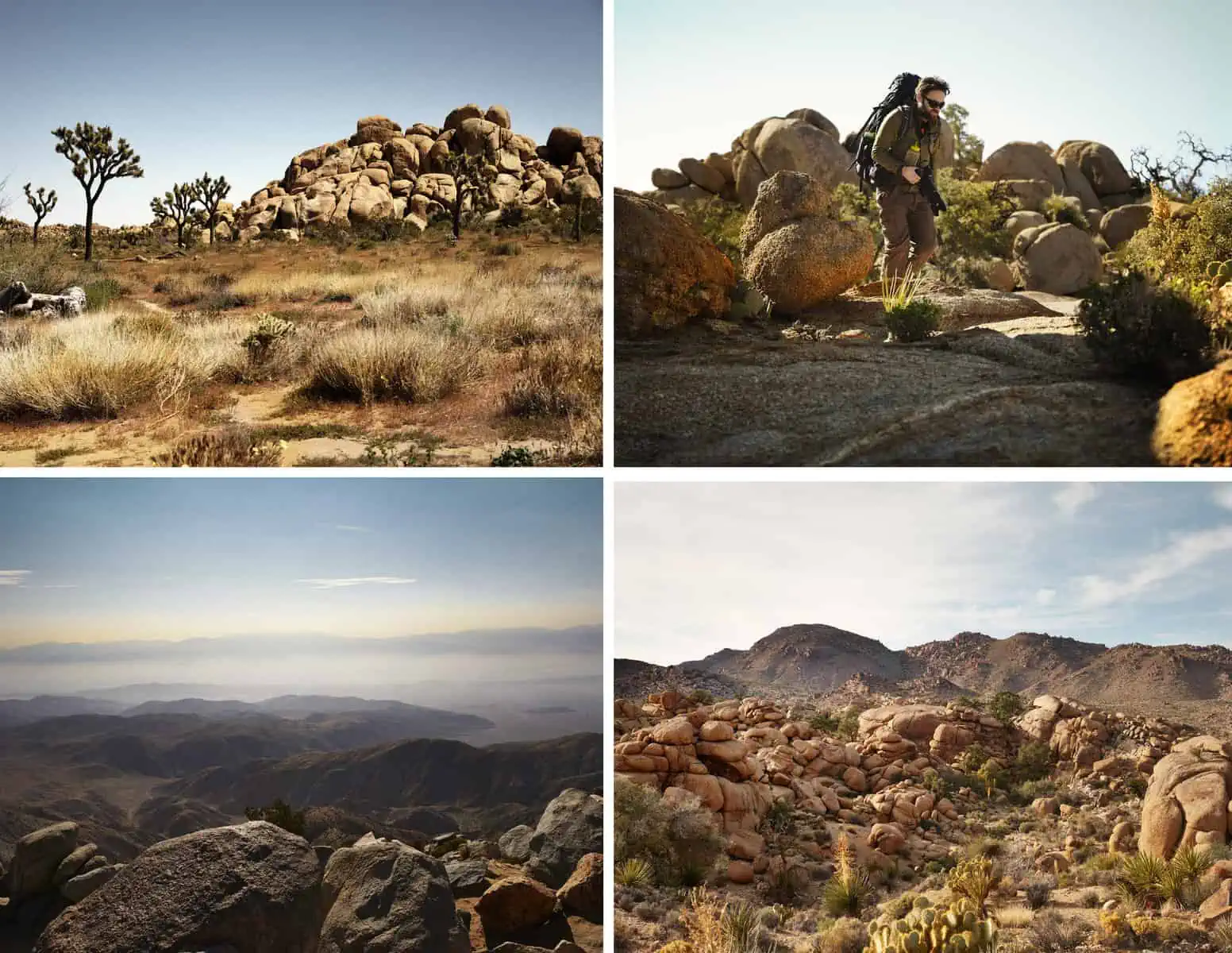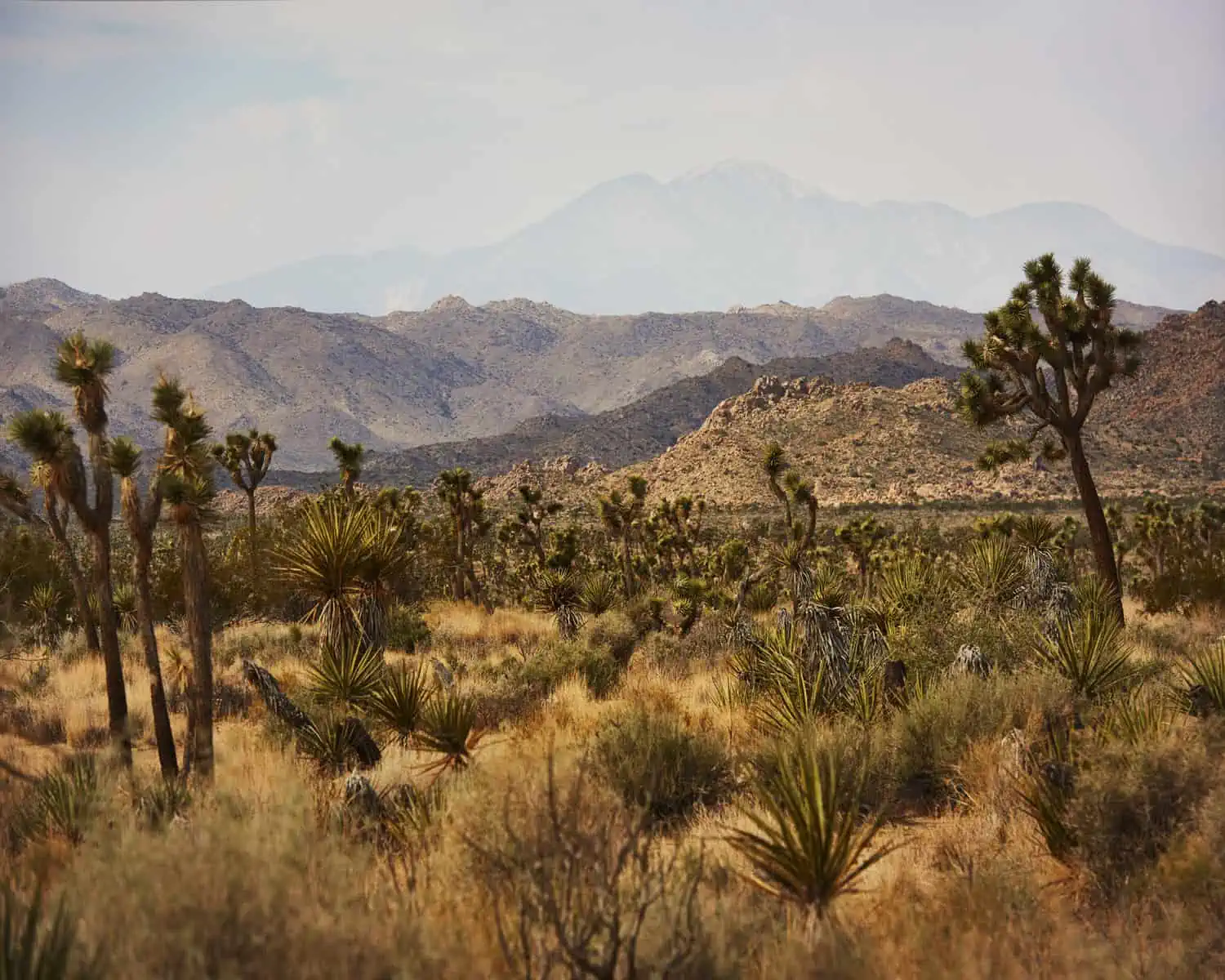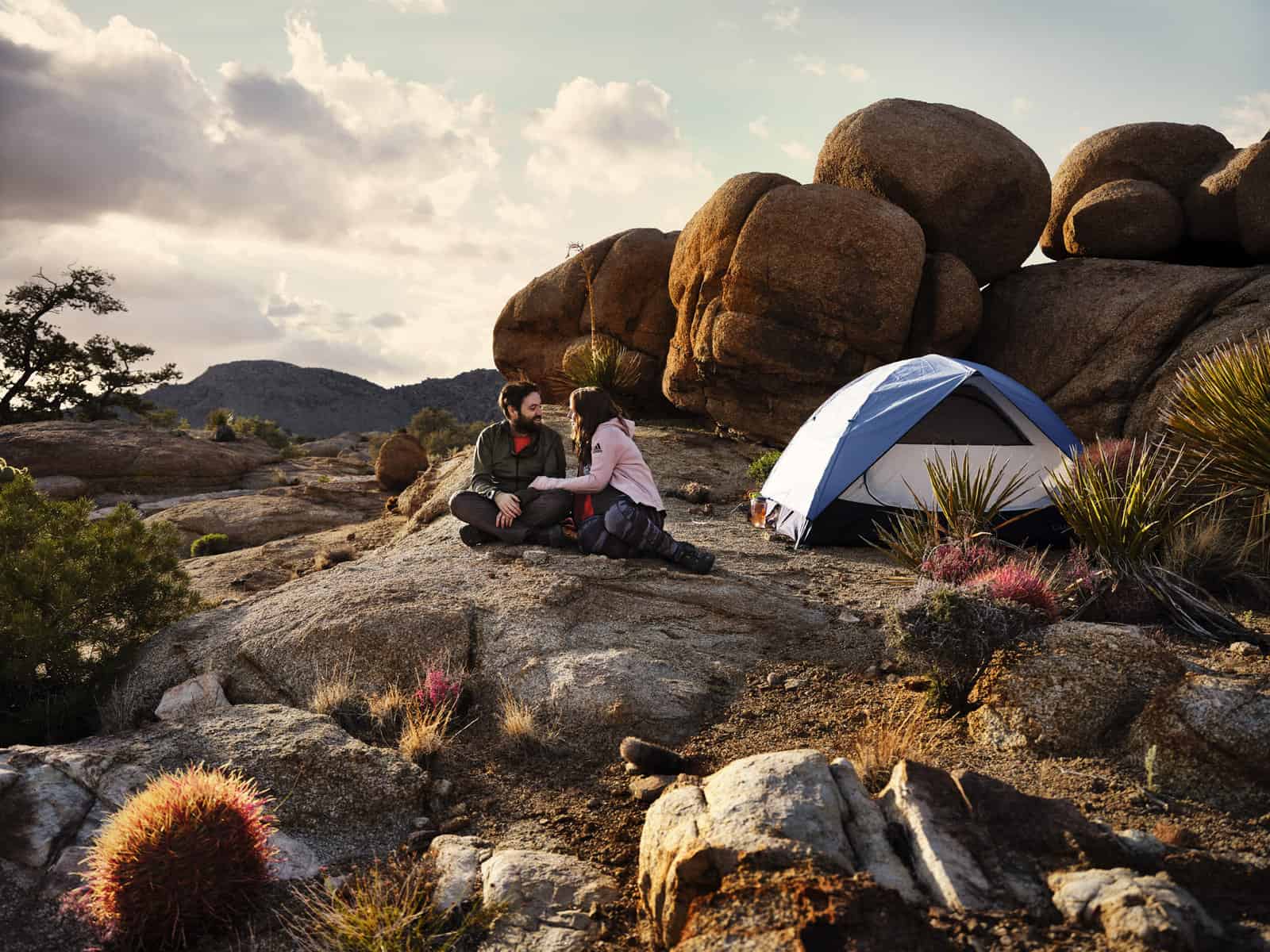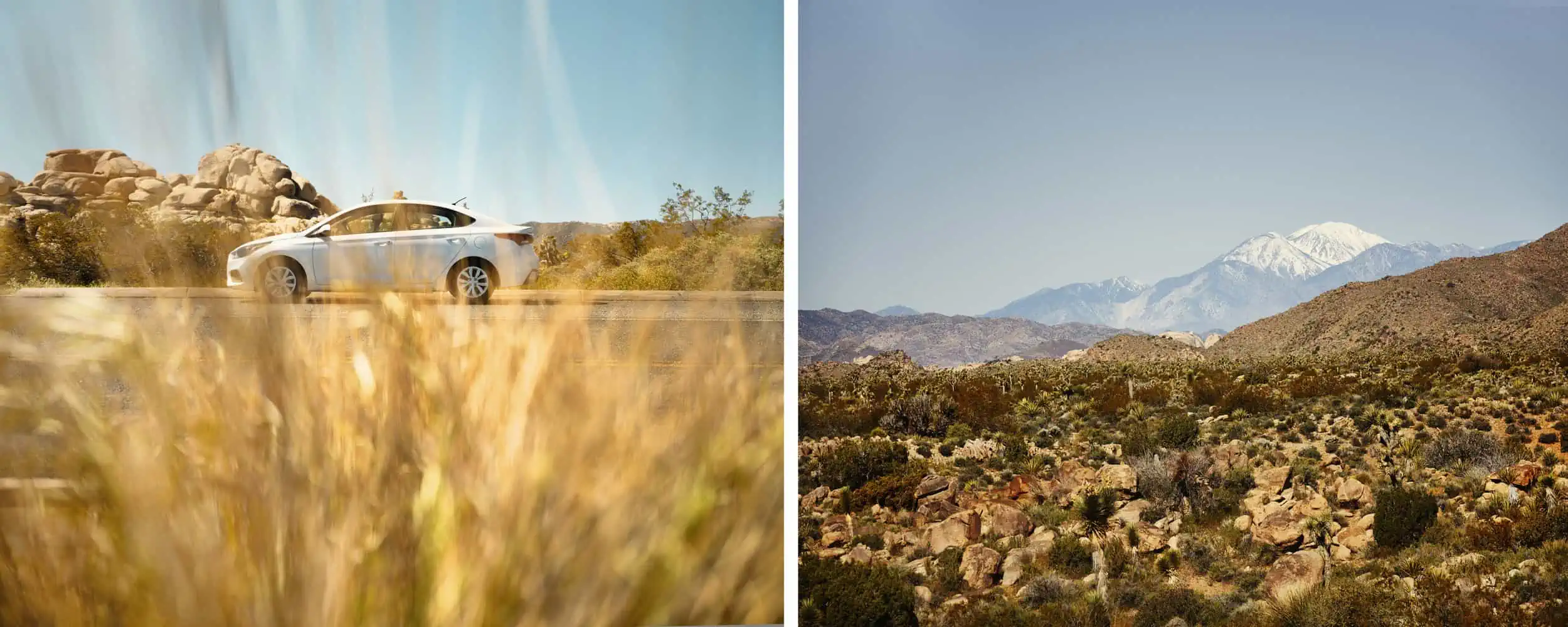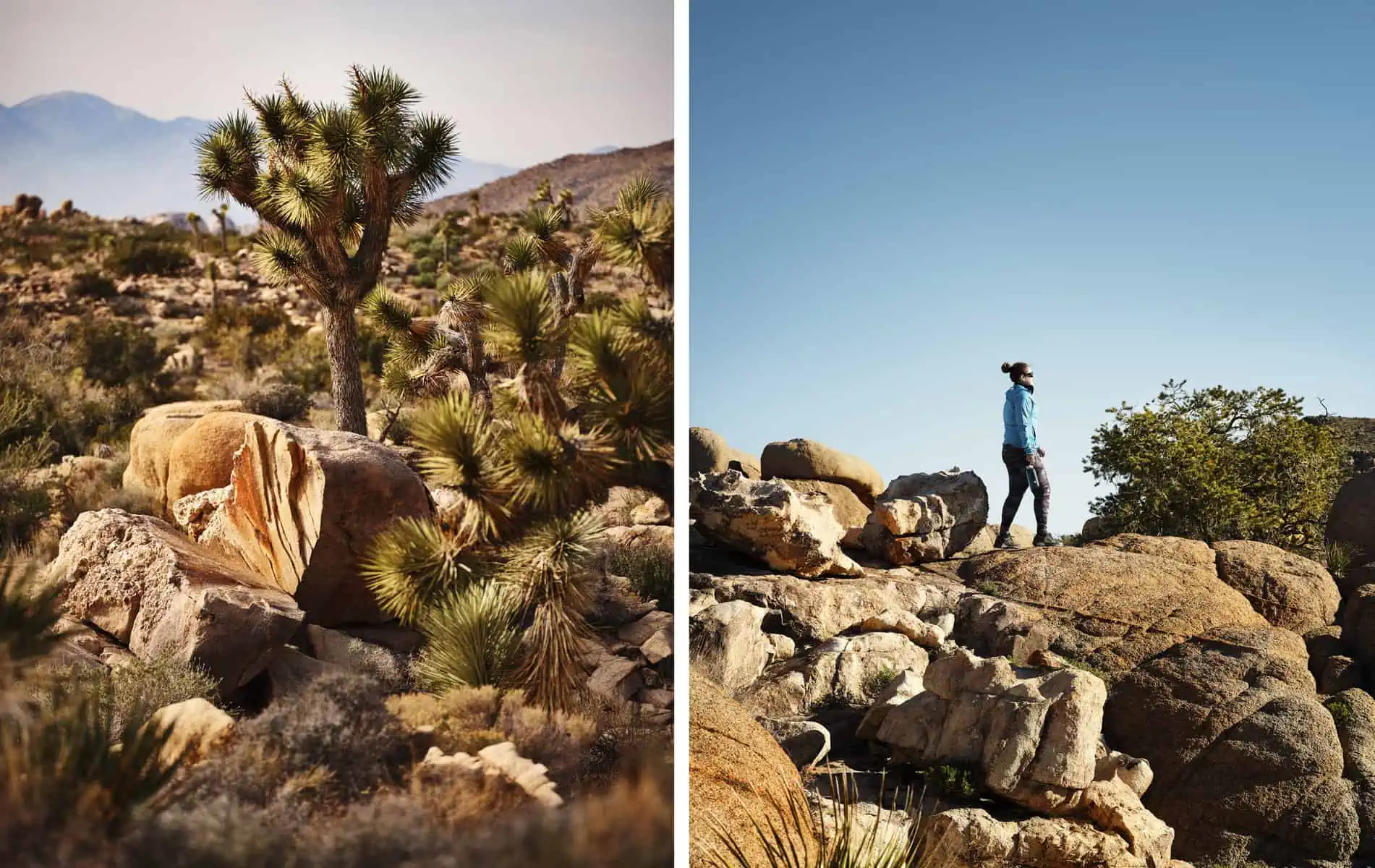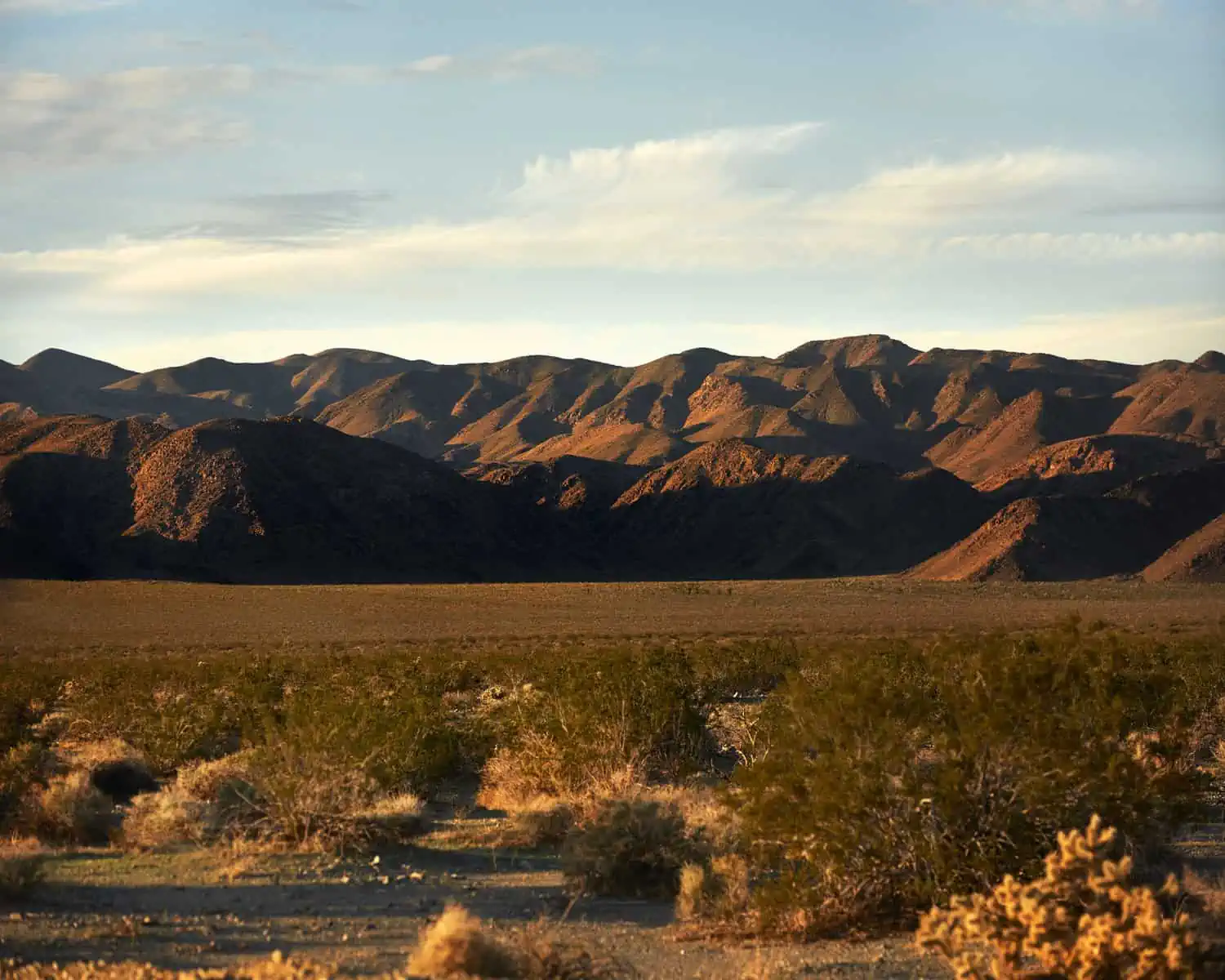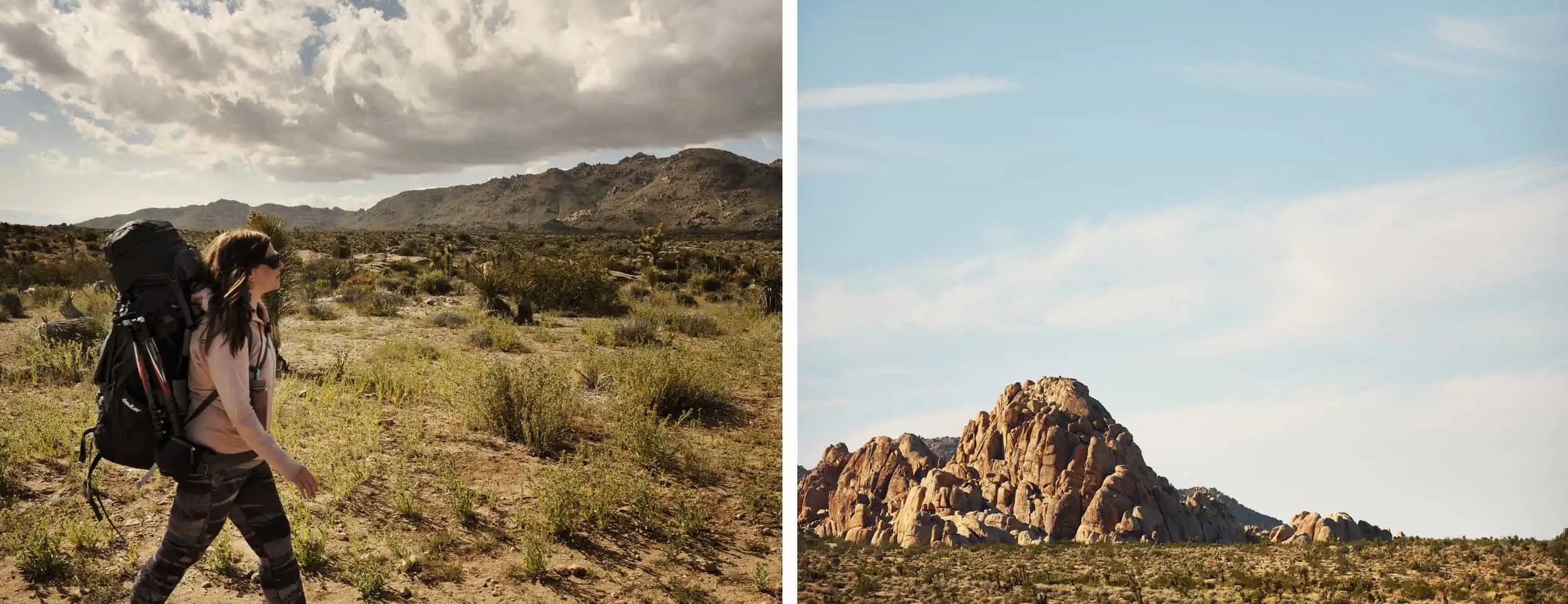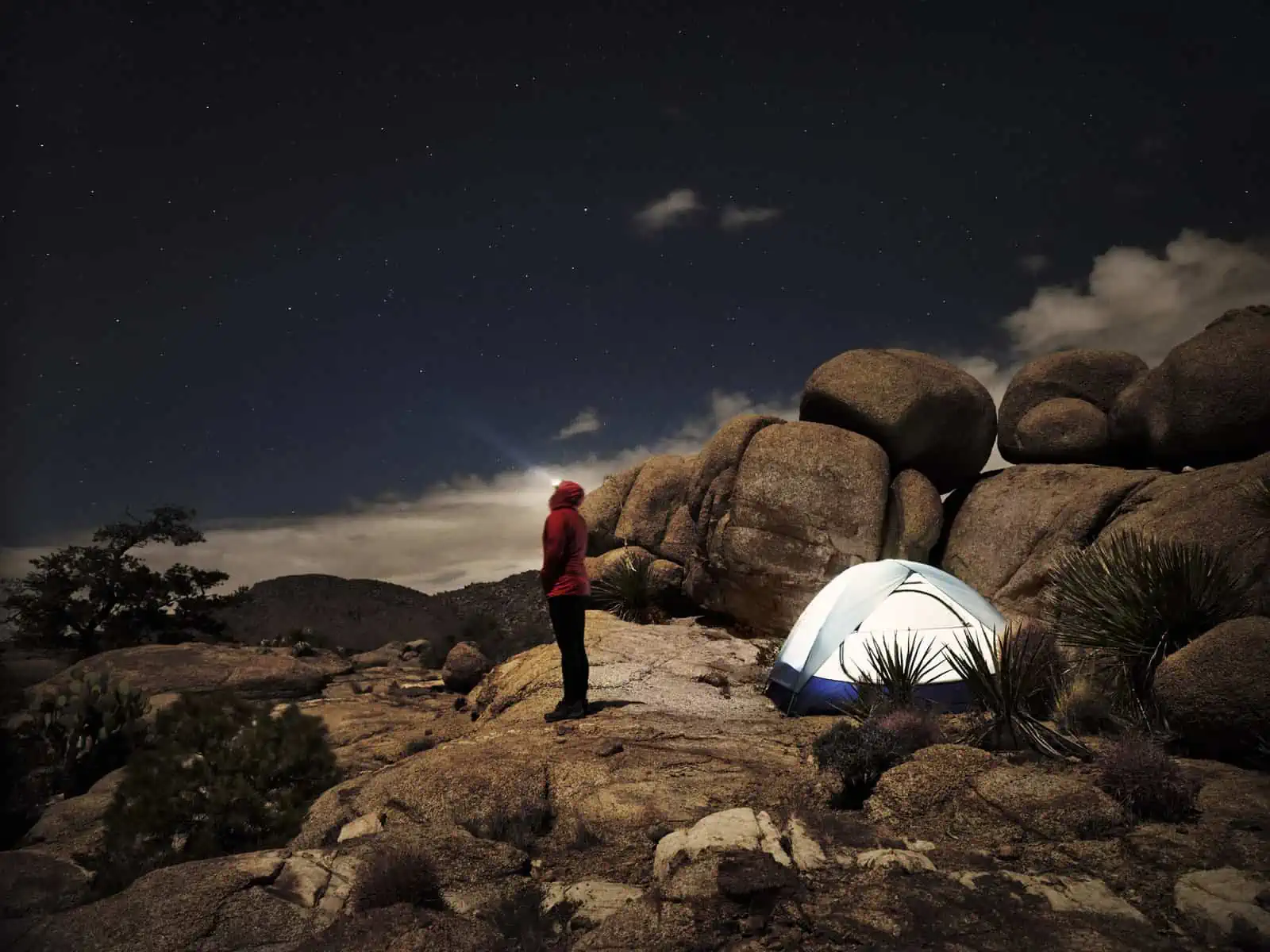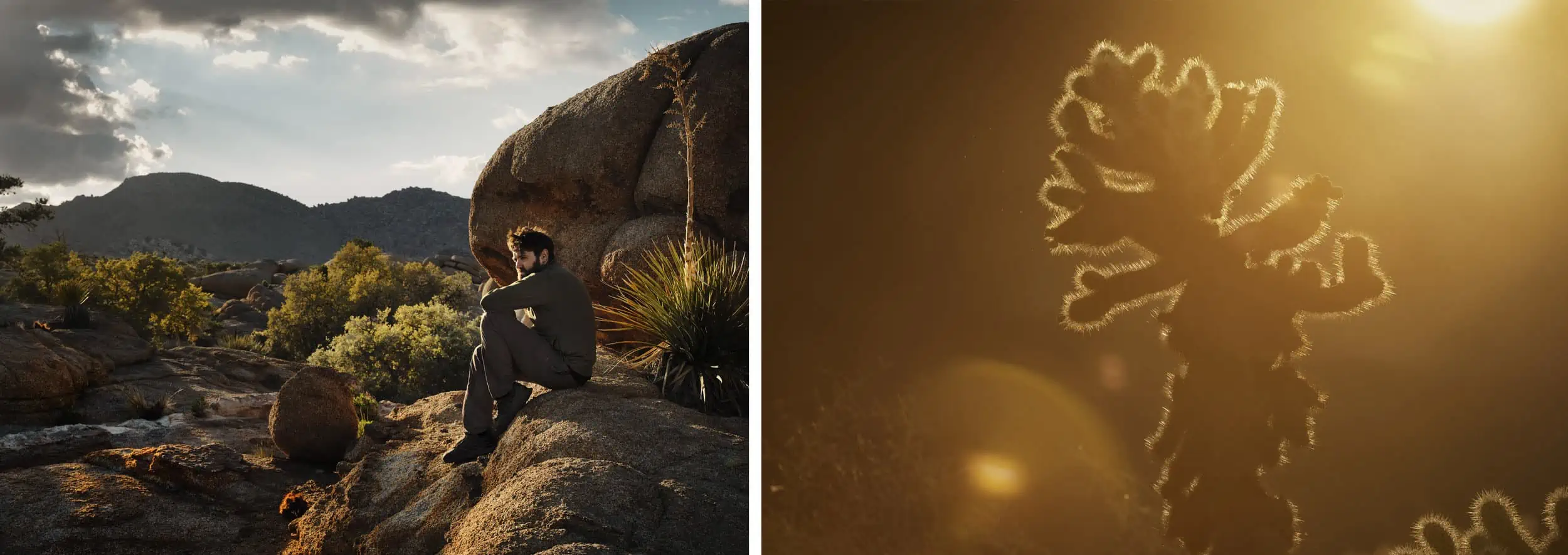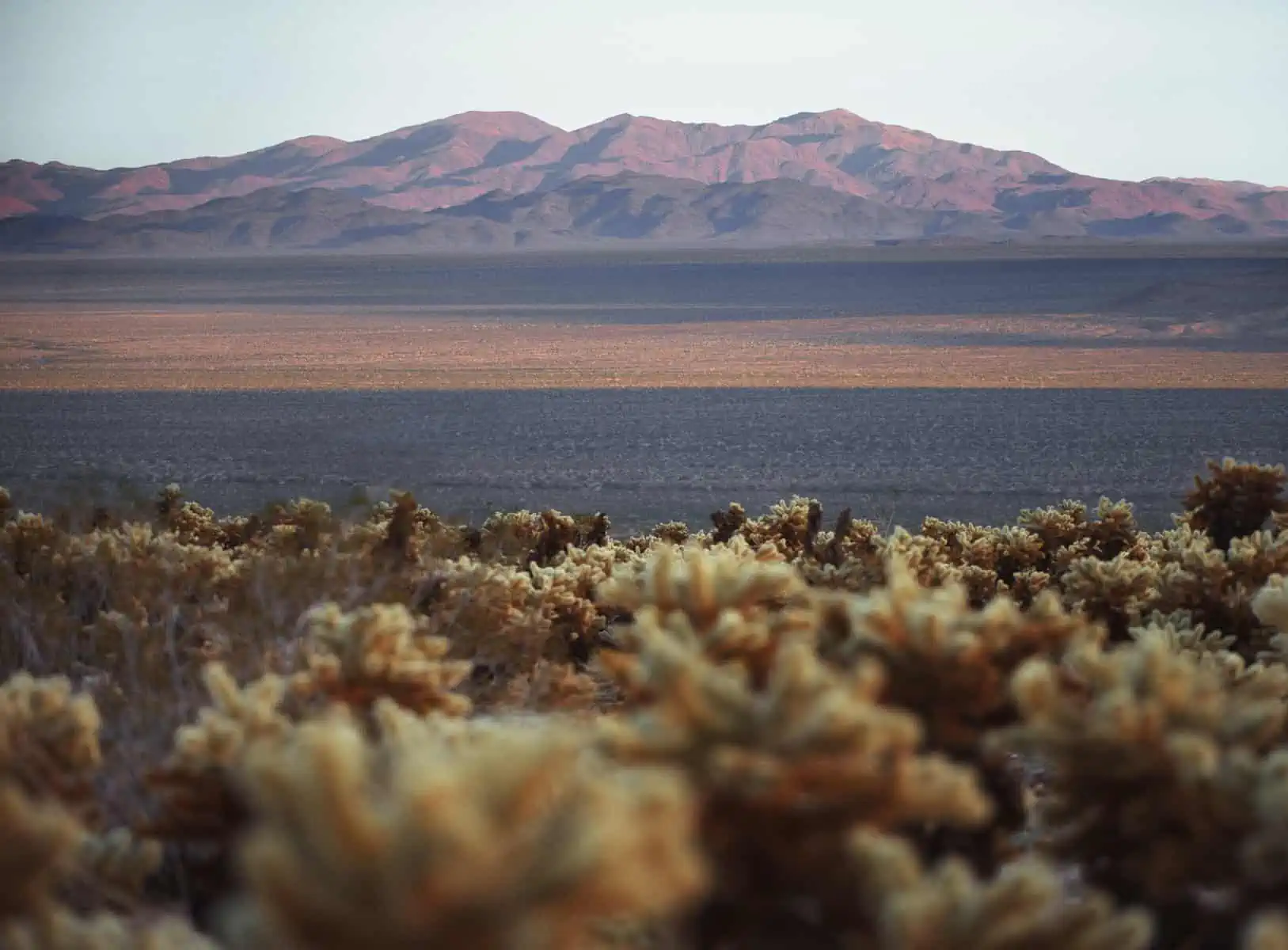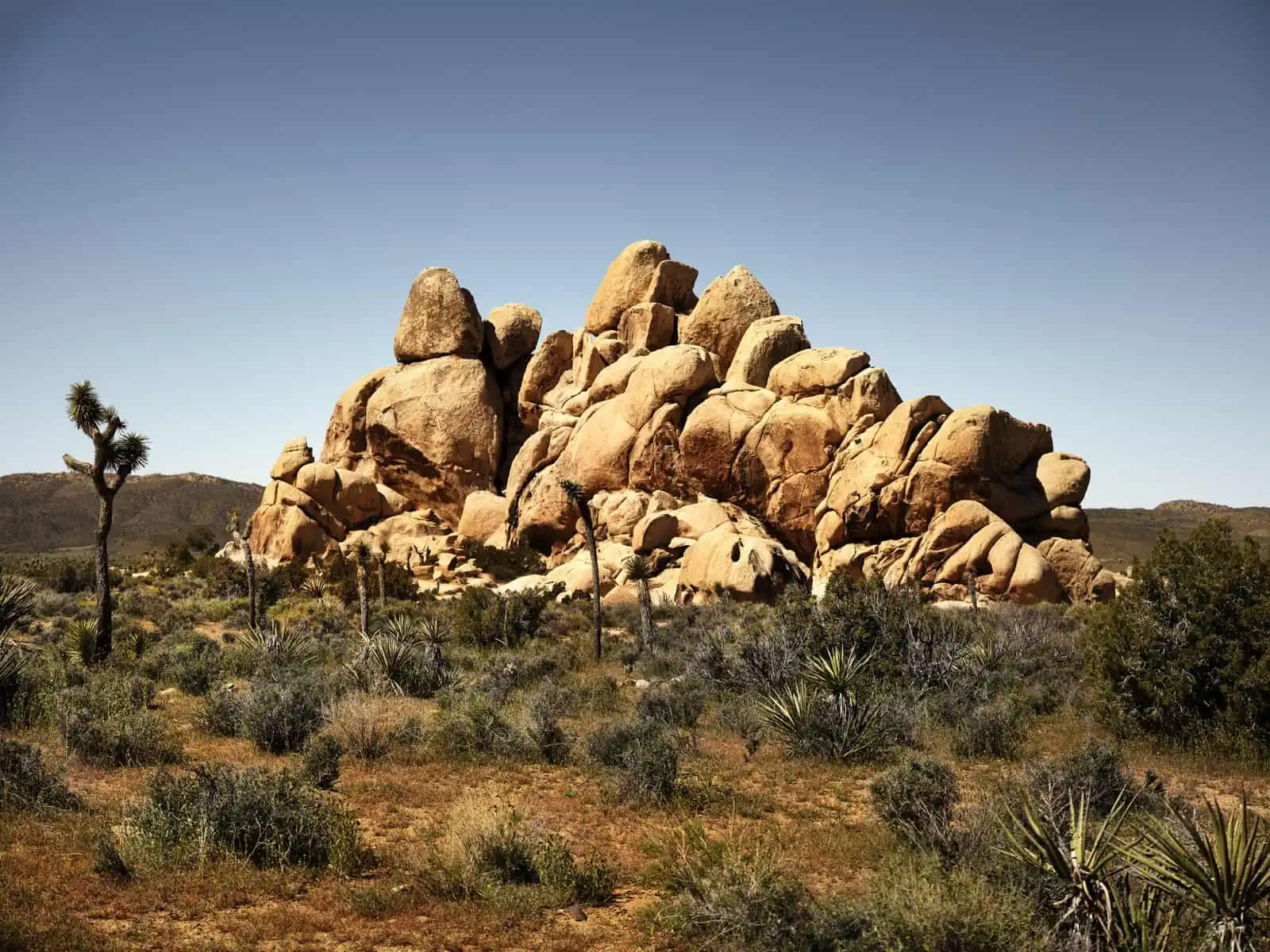Disclosure: This post is sponsored by Enterprise Rent A Car; all thoughts and opinions are our own.
Joshua Tree National Park, situated at the meeting of the Mojave and Colorado Desert in Southern California, is undeniably one of the most magical places in the whole oftheAmerican West. From protected night skies boasting a chance to see the MilkyWay, to the intriguing stacked-high boulders and, of course, the endless Joshua Trees (or Yucca Brevifolia, to give them their proper name), there are virtuallylimitless possibilities for anyone wanting to experience big nature and craving unique wilderness experience.
Location
Joshua Tree is located in the high Mojave Desert, Southern California, USA. The main entrances are from the towns of Joshua Tree and Twentynine Palms, both located off Highway 62.
Language Spoken
English
Currency
US Dollars
Getting there
Joshua Tree is the closest National Park to Los Angeles, and a two-and-a-half-hour drive will get you fromDowntown to the park gates. The park is also close to Palm Springs, Coachella, Indio and La Quinta.
Entry Fee
There is a fee to enter the National Park, and its advisable to check current prices on the National Park Website. Ifyou’re planning to visit more than one National Park in the next year, or need an adventure pass for any of the Californian National Forests, you may be better off buying an annual America The Beautiful Pass which can be bought from the kiosk instead of an entrance ticket and covers you for all National Parks and a lot of other monuments in the US.
Where to stay
Whilst it is possible to take a day trip out to Joshua Treefrom LA, it’s great to be able to spend some time really exploring. The neighboring cities all have a range of hotels, motels and other such accommodation which range in price considerably. Most of the neighboring cities and towns will see you roughly an hour’s drive to the park. There are a small number of places to stay in Joshua Tree town itself, but due to their vicinity to the park, these get booked up really early. If you want to stay in the park itself, your only option is to camp. There are a number of campgrounds in the park ranging from first come first serve such as Belle, Ryan and White Tank and reserve ahead sites such as Indian Cove, Cottonwood and Jumbo Rocks. These can go very quickly especially in peak season (October – May).Fees for these campsites vary – depending on what facilities (water, toilets etc.) each site offers, but are all very reasonable. The main campsites are all accessible with RVs and motor homes.
Our favorite option is to camp in the backcountry. It is generally not allowed to camp in the park outside of the recognised campsites, however, camping is allowed on certain longer distance backcountry trails (the map you receive when you enter the park has these trails marked with a ‘B’).To backcountry camp, you must get hold of a free backcountry permit. These are available in boxes at all of the backcountry trailheads. You fill out the form, post half of it into a collection box and keep hold of the other half for the duration of your camp. There are certain rules associated with backcountry camping, a full list of which are at the trailhead, but the main points are that you must camp at least one mile from the road and 500 feet from the trail or any water source. Also, camp fires are not allowed when backcountry camping. It is also worth noting that overnight parking is only allowed at backcountry trailheads (these are all clearly signposted as suitable for overnight parking).
Best time to visit
October – May is high season in the park for a reason – the temperatures are manageable. It is not advisable to visit in the summer months due to the extreme temperatures (reaching well into the 100’s in the desert. As the desert holds extreme temperatures, it is advisable to spend as much of your time exploring the park during the early hours and later hours of the day.
Gear
This will be very dependent on what you plan to do with your time in the park, but as a must, plenty of water! If you’re going to be camping, it’s worth checking ahead to see if your campsite has water. There is the ability to refill water at the ranger stations located in the park as well, but other than this, drinkingwater is not available in the park – so be prepared!If you’re going to be hiking and exploring, you will need to make sure you take enough water with you to keep you adequately hydrated for the time you’ll need it for – its suggested to take roughly 32oz/1 liter of water for everytwohoursyou’ll be hiking – especially in the heat where you’ll be losing salt by sweating which will dehydrate you faster.You’ll also need sunscreen and cool clothing which you can move in easily and lightweight socks are also preferable. Hiking shoes are also a good idea – something that allows you comfort but that keeps your feet aired – we have found that our traditional hiking boots are too much for Joshua Tree and a lot of desert hiking. It can really depend on where you’re hiking though – if the terrain is rocky, you may need better ankle support than can be provided with trail runners. Downloading and mapping your trail directions before you set out is also a good idea as there is virtually no cell service throughout the park. A lot of the shorter trails are mapped in the visitor guide and well-marked on the trails, but if you’re in the backcountry, it’s a good idea to have things mapped out!
Joshua Tree will give you a really varied view of the desert, and, as you drive through the main Park Boulevard, you’ll see that the views change dramatically throughout the park. A lot of people think of Joshua Tree as being those iconic boulder stacks and charismatic trees, but when you spend some time exploring, you’ll also take in a wealth of stunning high desert mountains and other worldly views of the Mojave Desert. It is entirely possible to drive through the park taking in a lot of the sights from the road where there are pull in spots and even smaller nature trails, but once you’ve taken in the main sights (and maybe want a rest from being surrounded by other people) you may be craving a bit more adventure and some solitude.
Hiking in Joshua Tree
There is a whole wealth of hikes in the park that are widely publicized in the visitor brochure (which are all rated by length, difficulty and altitude gain) a lot of these hikes can be incredibly popular, and you can find yourself surrounded by other people for the whole time. Whilst the ‘big hitter’ hikes are popular for a good reason, this isn’t generally our style and we love to be able to take in the sights and sounds of nature uninterrupted. Thelonger andless populated hikes in the park are referred to as backcountry hikes, and these are symbolized with a‘B’to mark the trailhead in the visitor guide. There are also a lot of trails listed online that do not appear in the main park information which are incredible. Backcountry hiking in Joshua Tree is one of our favorite things to do – the sense of peace, quiet and tranquility coupled with the jaw dropping, ever changing scenery make it an amazing place to explore. We’ve had the trails to ourselves a lot of times we’ve hiked there – maybe passing by a couple of other hikers throughout a whole day. It can be really easy to miss a lot of the true nature of the National Park and the wilderness it offers by just sticking to the heavily trafficked exhibits the park has to offer, and in our opinion,that’sa real shame. There are also many backcountry hikes that are just outside of the National Park – do not discount these, they are every bit as special.
Back country hikes in Joshua Tree
There are so many hikes available in the park, you could probably spend years exploring and never see everything, but here is a small selection of some of our favorite hikes.
Pine City Trail
The trail is longer than marked on the trailhead board, spanning roughly 4.4 mile out and back, this hike can easily be extended as there are endless possibilities to continue and explore. The hike is classed as easy but depending on where you explore around the trail or if you go down into the Canyon at Pine City,itcan be classed as moderate. There are certain areas where trails veer off the main track where endless more hours could be spent hiking and exploring over boulders. At the end of the hike, as you reach a viewpoint, a sign will inform you that the trail is not maintained past this point but you can still continue down into the canyon to extend your hike. The trail is relatively flat, but we would recommend trying to do this hike either earlier or later in the day when the sun isn’t directly overhead as it is very exposed with no shade. A great landscape to hike through and with the ability to backcountry camp, this trail is a gorgeous out and back that will show you some stunning scenery, and in winter, some snowy mountains in the background. The trail can be accessed from the Desert Queen Mine Road, and there is ample parking for both day and overnight use.
Willow Hole Trail
One of the most rewarding hikes in the park, the trail is a 7-mile round trip with roughly 400ft of elevation gain and is moderate in difficulty. The hike to Willow Hole allows a fantastic close up look at the Wonderland of rock. The hike itself is very straightforward: you follow the Boy Scout Trail for roughly 1.2 miles before branching off northeast in the direction of the Wonderland of rock. At 2.5 miles, the trail turns into a wash which you then follow until the end of the hike. A word of warning, there are many crisscross patterns here, and many turns that you can take that can make it misleading, so it’s a good idea to have the trail mapped out on GPS before you go.
Maze Loop Trail
The Maze Loop is a 4.7 mile loop trail located in the Twentynine Palms area with roughly 360ft of elevation gain and is moderate in difficulty. There is incredibly limited parking available at the trailhead for the hike, so it is advisable (as is with all hikes in Joshua Tree) to arrive early. This trail is more on the rugged side and is great for those who want to admire up close Joshua Tree’s amazing geology. The trail follows a wash where the walking, like many of the trails in the park is sandy and as you wind your way through the boulders around you, you’ll have great views of the desert.
Photography tips for Joshua Tree
Joshua Tree is a naturally photogenic environment and makes getting your camera out a real treat. We’d advise combining some of the longer trails with some of the shorter trails visible on the National Park map to really get a feel for what works visually. Cholla Cactus garden is a really popular location to head to either at sunset and you certainly won’t be alone! As beautiful as this sight is, and whilst most people will be focusing on the cacti, don’t forget to turn around and see the colors that are often strongly visible on the mountains behind you towards sunset. Joshua Tree all around is incredible at sunset so it’s a good idea to give yourself some time to drive around the park finding some positions that work for you on any given day, you can also be sure to take in a great sunset whilst out on a trail.It is worth bearing in mind that the mountains in and around the park are high enough that they cut off the Sun’s light before it has fully set, bringing the sunset forward– so, check the sunset time and aim to be in position 30-40 minutes ahead of time for the best views.
Curiosity is your friend in Joshua Tree, so try to explore around the exhibits as much as possible, try to head up higher to some of the vantage points and focus on details as well as sweeping vistas. It’s a good idea to have a combination of shorter and longer lenses when some of the vistas can appear a little flat – using a longer lens will allow you some variety in being able to capture some of the detail in the distance as well. We’d also recommend visiting earlier in the year as the desert hasn’t completely heated up to its summer temperatures, often providing much clearer days.
For more reading on Joshua Tree, you can click on this link for more related content.

